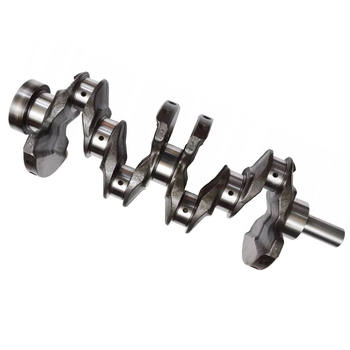Understanding the Importance of Crankshafts in Your Toyota Engine
To be honest, the crankshaft is an essential component in your Toyota's engine. It transforms the linear motion of the pistons into rotational motion that drives the wheels. If your crankshaft fails, it can cause severe engine damage, leaving you stranded on the side of the road. In my experience, it's always better to invest in a reliable replacement crankshaft than to risk engine failure.
Signs of Crankshaft Failure
Frankly speaking, identifying crankshaft failure early can save you money and headaches in the long run. Some common signs of crankshaft failure include:
If you notice any of these symptoms, it's essential to have your crankshaft inspected by a professional mechanic as soon as possible.
Choosing the Right Replacement Crankshaft for Your Toyota
When it comes to replacing your crankshaft, it's absolutely necessary to choose a reliable and high-quality replacement part. Here are some factors to consider when selecting a replacement crankshaft:
Brand Reputation
Interestingly enough, brand reputation can be an excellent indicator of quality. Look for reputable brands with a proven track record of producing reliable replacement crankshafts for Toyota engines. Some top brands include OEM (Original Equipment Manufacturer), Aisin, and Brian Crower.
Material Quality
The material quality of the crankshaft is extremely important, as it affects the part's durability and performance. Most modern crankshafts are made from cast iron or forged steel. Forged steel crankshafts are typically stronger and more durable than cast iron ones, but they are also more expensive.
Fitment and Compatibility
Ensure that the replacement crankshaft is a perfect fit for your Toyota's engine. Incompatible parts can cause further damage and may lead to costly repairs. Double-check the specifications of the replacement crankshaft to make sure it matches your engine's make, model, and year.
Installation and Maintenance Tips for Your Replacement Crankshaft
Once you've chosen a reliable replacement crankshaft, it's crucial to install it correctly and maintain it properly. Here are a few tips to help you get the most out of your new crankshaft:
Professional Installation
While some experienced DIY enthusiasts may be comfortable installing a crankshaft, it's usually best to leave it to the professionals. A certified mechanic can ensure that the crankshaft is installed correctly and that all necessary adjustments are made.
Regular Oil Changes
One of the best ways to prolong the life of your crankshaft is to change your engine oil regularly. Fresh oil helps lubricate the crankshaft bearings, reducing friction and wear. Most Toyota engines require oil changes every 5,000 to 10,000 miles, depending on the type of oil used.
Monitor Engine Performance
Keep an eye on your engine's performance and address any issues promptly. Regular maintenance, such as tune-ups and tire rotations, can help prevent unnecessary stress on your crankshaft and prolong its lifespan.
In Conclusion
In conclusion, investing in a reliable replacement crankshaft is essential for the health and longevity of your Toyota's engine. By choosing a reputable brand, considering material quality, and ensuring proper fitment and compatibility, you can minimize the risk of crankshaft failure and enjoy a smooth, trouble-free driving experience. Remember to have your crankshaft installed by a professional and maintain it properly to get the most out of your investment.




